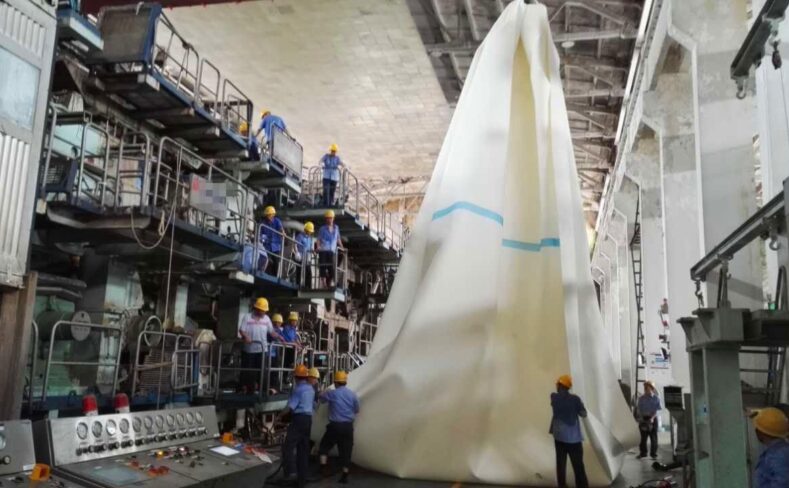What is paper rewet?
Paper rewetting is a capillary water transfer phenomenon, which can occur even at high speed and with a short residence time in the nip.
During the rewetting process, the water in the press felt enters the wet paper, and the water temporarily transferred to the grooves or holes returns to the press felt, and then enters the paper from the press felt (especially when the paper runs with the press felt, and the water in the press felt enters the wet paper). This often occurs in low vehicle speeds, wide nip areas, and soft press felts.
Rewetting in the nip
When the pressing pressure begins to drop during pressing, rewetting will occur. Generally speaking, the rewetting of paper has nothing to do with the quantitative and vehicle speed. Its size is controlled by the capillary thickness of the press felt and wet paper, the expansion recovery speed of the wet paper and the press felt, and the moisture content of the press felt.
Rewetting after the nip
The rewetting of the paper is related to the residence time in the nip, the dryness, and the roughness of the press felt surface. In order to shorten the contact time of the press felt, it can be solved by the lead angle of the press felt out of the press, so that the wet paper is separated immediately after the press felt leaves the nip. Press felts with uniform surface can also reduce rewetting. According to tests, under the same other conditions, the rewetting amount of a paper machine using a felt with uniform and fine surface is about 5g/㎡. If apress felt with a rough surface is used, the rewetting amount will increase by 15-20g/㎡.
Therefore, the rewetting of paper is closely related to the structural design of the felt, and the pressing pressure and paper quantity will also have a certain impact.
The rewetting of paper can be divided into three stages: internal rewetting, external rewetting, and separation rewetting
(1) Internal rewetting: The phenomenon of absorbing moisture before the paper leaves the press. At the press mouth, all the air and part of the moisture in the paper and the press felt are squeezed out. At the press outlet, the paper and the press felt will expand, and the new space will be filled with air. From the center of the press area to the separation point between the paper and the press felt, the pressing pressure drops and the rewetting phenomenon begins. The rewetting in this area mainly depends on the relative expansion performance of the paper and the felt.
(2) External rewetting: refers to the phenomenon that the paper absorbs moisture at the exit of the nip, which is mainly caused by contact with the felt. The degree of rewetting at the exit of the nip is much lighter than that inside the nip. External rewetting increases with time, moisture content, and roughness of the press felt surface. It is also subject to the surface and compression characteristics of the paper.
(3) Separation rewetting: This type of rewetting is sometimes also called water film splitting. It refers to the phenomenon that moisture enters the paper when the paper sheet is separated from the press felt. When the paper sheet is separated from the felt, the surface water layer in the gap between the paper sheet and the press felt is disconnected, and part of the water enters the paper sheet, and the other part of the water enters the press felt.


